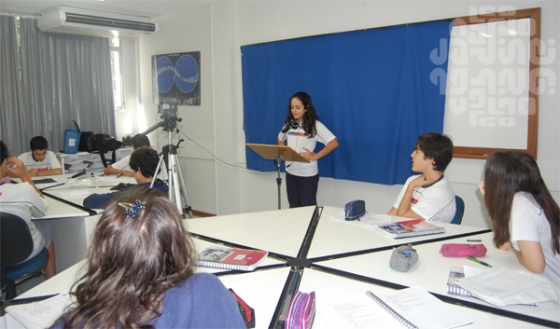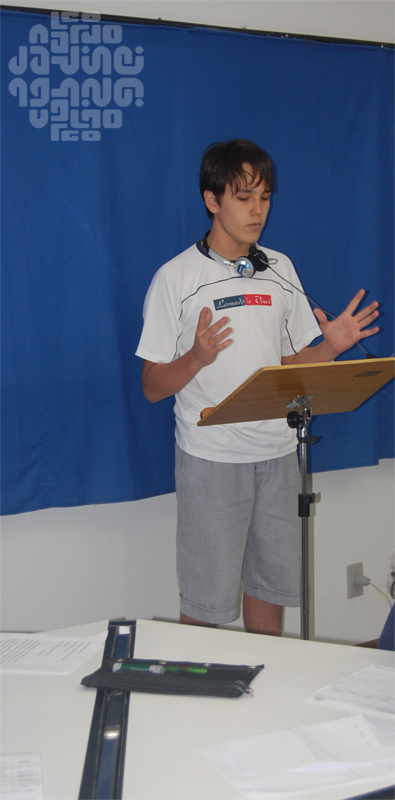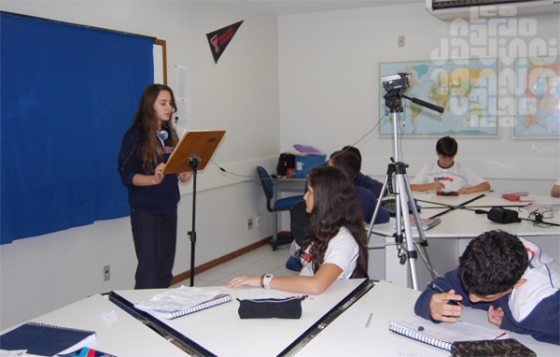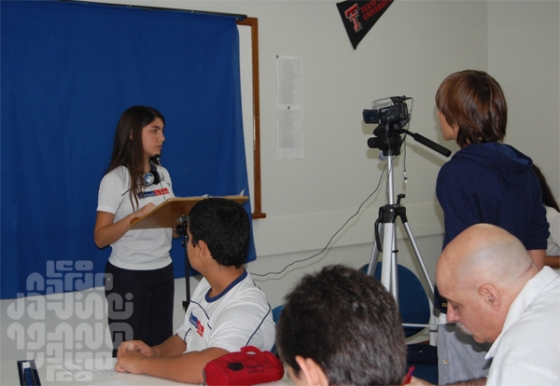The Spotlight is on You: Perform!
Doctor, lawyer, politician, engineer, or businessman….Medical seminars, court appearances, public speaking engagements, vocational presentations, public debates, interviews, or business negotiations… How many of us reading this article have not found ourselves forcibly thrust into the spotlight of our chosen professional field by reason of the necessary obligation of making an oral presentation to our peers?
While teaching public speaking is almost an art, the secret is to get students to stand up and speak as much as possible. Let them do the talking. The philosophy of teaching speech is straightforward: get the students up and in front of the class as often as possible. Now this isn`t actually all that simple because as you know, most people have a deathlike fear of speaking in public, even those who appear to be confident. The challenge then is to desensitize them to the experience and make it trivialized, so that without their even realizing it, little by little, speaking publicly becomes just another activity – in other words, no big deal at all.
The TTUHS course of public speaking at CELV is devoted to the method of teaching the students of how to stand up in front of an audience and make an oral presentation before a group of people on a particular subject matter. Students need to understand that how they say something and how they physically present themselves are just as important as what they say. By understanding the dynamics involved in effective persuasive speaking, students improve their overall confidence in communicating. But before explaining our methodology and the course syllabus, let us first examine what is speech.

Language came into life as a means of communication. It exists and is alive only through speech. In teaching speech to Brazilian students, we have to cope with two tasks: to teach them to understand foreign language and to teach them to speak the language. So, speech is a bilateral process. It includes hearing, on the one hand, and speaking, on the other. When we say "hearing" we mean listening and comprehension.
The aim of our work is as follows: to present the basic elements of a speech; to examine a speech as a bilateral process; to provide example exercises in speaking and hearing; and to practice oral presentation of a speech before an audience.
We are as well concerned with the psychological and linguistic characteristics of the speech. We instruct about the differences between the prepared and unprepared speech and their effect on generating speaker credibility in the minds of the audience and teach that speaking exists in two forms: dialogue and monologue.
The Process of Teaching Public Speaking
First, public speaking is a skill which can be learned, but it is an experience that can and should actually be enjoyed. What I require from my students from the very first day of class is that they talk to the other students in the class. It is relatively safe to turn to someone sitting near you to strike up an introductory conversation, and the payback is that each student will immediately have at least one “speaking buddy” in the class.
Next, I tell the students that they will be presenting a series of speeches: the first is a persuasive speech about their professional dream for the future; the second is a descriptive speech about what is problematically wrong with their city, their country, and the world and how would they change each one in order to make it better; the third is an expository speech about a polemic subject in which the student is required to make a Power Point presentation of the issues involved and adopt a position or point of view on the subject; and finally the fourth is a persuasive speech in which the student is assigned the role of running for the office of mayor of Vitoria and must convince the audience why as voters, they should choose him or her as their first choice for mayor. All of these speeches are recorded by a video-camera for later showing and to provide speakers with critical comments from the teacher and fellow students. The focus of the recording is to make the student aware of his or her physical body movements, eye contact involvement with the audience, word velocity, vocal variations, and overall presence.

The idea of conducting several speeches is to make the student more acclimated, comfortable, and confident when speaking in front of a group. At the same time, I make it clear that speaking is only part of the students` responsibilities in the class: they are also required to listen actively and respond constructively to their peers` speeches. Additionally, the students are required to complete readings, submit written assignments, and perform analysis of famous speeches by renowned speakers such as: Steve Jobs; Martin Luther King, Jr.; Malcolm X; Pres. Barack Obama; Pres. John F. Kennedy; Charles Chaplin; etc.
After about two-thirds of the semester has passed, the students are ready to embark on the more formal presentation of the course. The course is purposely planned so that the speeches build in complexity and length. This is done with the teaching concept that the students are to be challenged with the most sophisticated assignments of the semester at a time when they should be more than prepared. In this way, the latter part of the semester accounts most heavily for their formal assessment and evaluation.
The Strategy: Appear Rational
When students are trying to convince someone of something, they must first establish their credibility, or in other words, they must sell themselves before they sell their message. If people feel that they are not being reasonable or rational, they do not stand a chance. They must be committed to the ideals and goals of their speech and what they are saying. They should not use words such as "maybe" or "might"- they should use positive words such as "will" and "must." Students must portray themselves as the authority figures in this speech, so they had better supply enough information (typically by using examples, comparisons, statistics, and/or testimonials) to prove their points so that they can seem knowledgeable, and they had better know their material cold. People can usually spot someone who is trying to "wing" a speech. They should also appear to be truthful - even when they are really stretching a point. If they do not appear to be earnest, even if their message is the 100% truth, people will doubt their word and tune out their speech. Lastly, they must not be afraid to show a little emotion - this is not a sterile or static speech. Students` bodies and voices must match the tone of their words. If their language is strong, they must present a physical force to go along with their deliveries.

Assessment by the Class
The class assesses each speaker`s performance in terms of voice and body coordination and in terms of persuasiveness. Each class has performance assessment charts to facilitate this process. The class has two major criteria to consider after each member`s speech. First, the delivery. Were the speaker`s body, words, and actions in synchronization and harmony? Did one support the other or was there tension between the body and the voice? Secondly, was the audience persuaded? Why or why not? The focus of the discussion is as to what makes a persuasive speech work and how the intangibles affect a positive outcome.
Conclusion
At first blush, all of the students, upon hearing the course syllabus, are anxiety ridden, nervously panicked, plain scared, and full of the proverbial “butterflies in the stomach” syndrome. The tasks presented to the students seem to them to be insurmountable and impossible to achieve. But, as the public speaking course unfolds itself over time, it is amazing to observe and witness the transformations of the individual students; through their preparation and practice of the different speeches, they gain confidence, self-reliance, poise, and stature. With this new found self-assurance, students are now ready and equipped for their future endeavors and any oral speaking hurdles placed in their way.


Rua Elias Tommasi Sobrinho, 154, Santa Lúcia - Vitória, ES - Brasil - CEP 29056-910 - Tel: (27) 3334 6300
© Centro Educacional Leonardo da Vinci 2025 · www.davincivix.com.br
